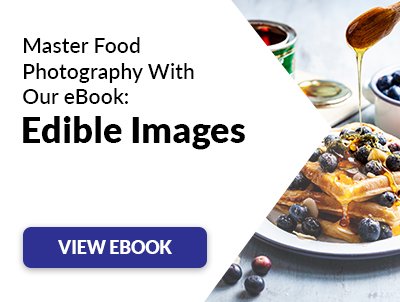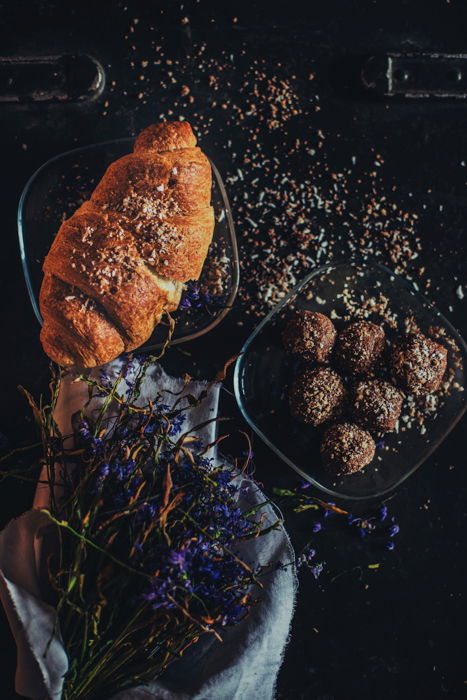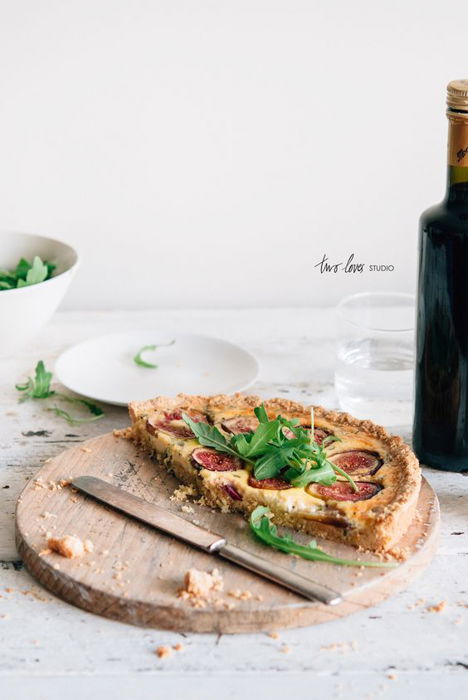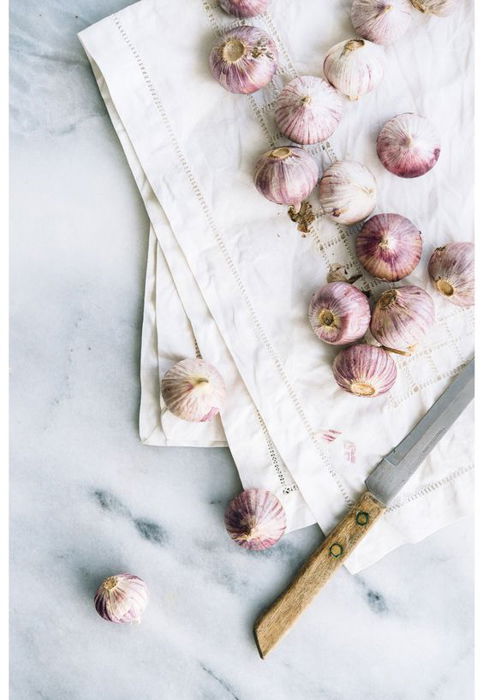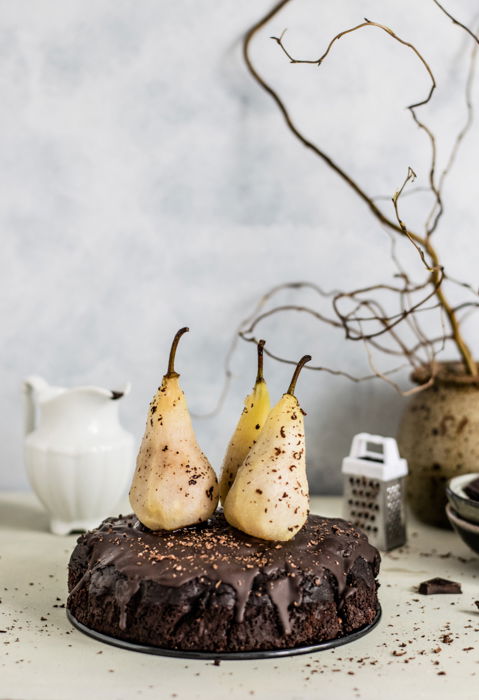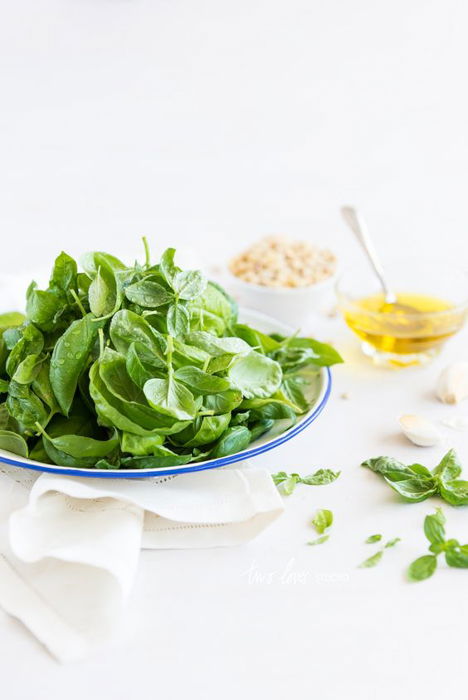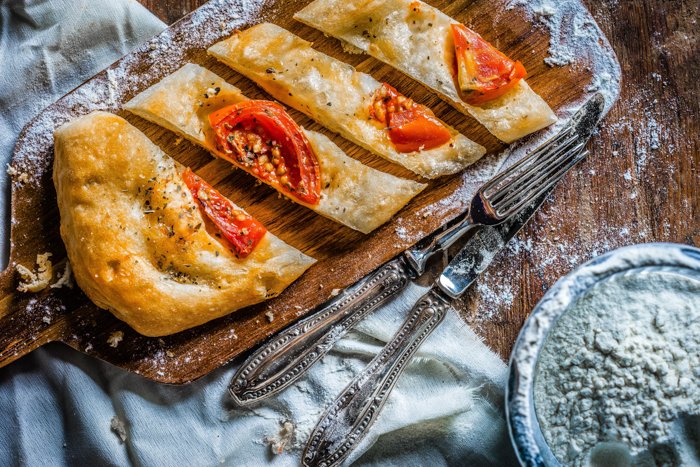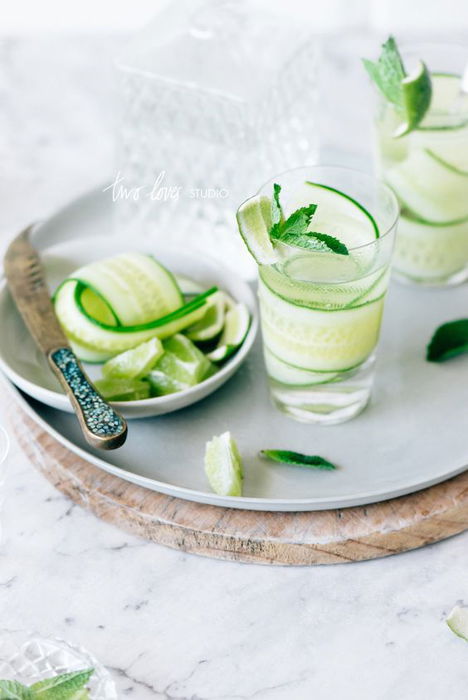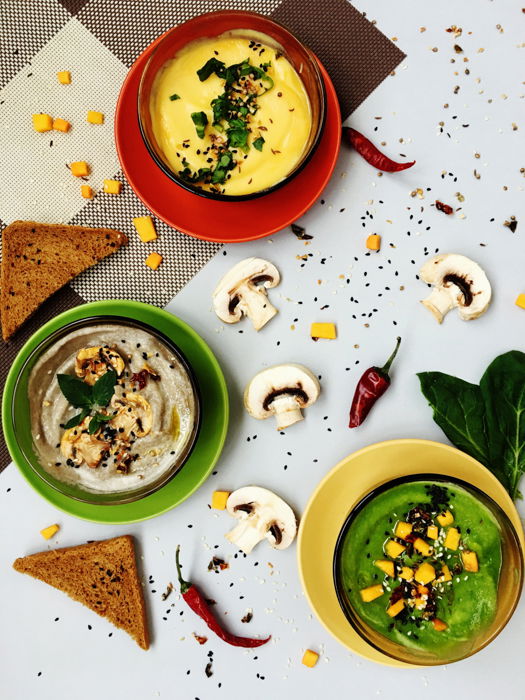10. How to Find the Hero Angle for Food Photography
There are usually three angles that are popular in food photography. Overhead, 45 degrees and straight on. But they don’t all work for every type of food. To photograph your dish looking its best, it’s important to find your recipe’s hero angle. The angle that makes the dish come to light. The hero angle will show off the layers and ingredients. This will tell the viewer everything there is to know about how the food was made. The easiest way to find the hero angle is to capture all three of the most common angles and compare them side by side. The one that looks the best should be posted near the top of your blog post. You’ll want this to be the image that Google uses to promote your article. The next angles can come further down the post to help the reader visualise your dish. Whatever you chose, you will want to stick away from angles that make recipes look flat or distorted. For example, a pizza doesn’t look great being shot straight on as it’s a flat subject. The best angle for flat subjects like pizza is overhead. With a burger, shooting it overhead means missing the juicy ingredients and layers. Instead, we’d want to shoot a burger straight on. And this is a tip for everyone who shoots food.
9. Shoot a Food Story Your Viewers Can Relate To
One of the best things about food and food blogs is that readers connect to a larger food story. It’s the reason food bloggers into blogging. There could be a million different chocolate cake recipes on the internet. What makes someone want to make your chocolate cake over another they saw on Pinterest? The food story! How you style the food, and compose your images will strengthen your food story. Having a unique story allows your readers to connect with your recipe. It brings up emotion and evokes nostalgia. So how do you do this with your photography? Well, you’ll want to shoot the progression of your dish or recipe. Where were the ingredients sourced, how they were prepared, etc. You can capture different stages of the cooking process. This will show the reader those little differences in the method. It will show them what makes your chocolate cake special. Capture the dish coming out of the oven. Capture it unglazed, and see if you can get an action shot, like pouring chocolate ganache. This helps the reader build a story. It will take them back to when they were a child watching their mother make her famous cake. Once the reader can connect to your food story, they are more likely to come back and visit other recipes.
8. A Consistent Style Will Keep a Viewer’s Attention Longer
Your food blog represents you, you’re a brand. Unlike a freelance photographer, food bloggers should have consistency in mood, style, editing and lighting. Just like you need to have consistency with your recipes and what you’re creating, so too should your images be. One of the best ways to do that is to create a ‘go-to’ photography set up. This will consist of finding one or two directions of light that work best for your subject. Usually, side light is used in food photography. It’s easy to find and is flattering for every subject. Find a spot in your home that works well, where you can manipulate the light to fall on your subject in a flattering way. Then you can use this space to shoot in every time. This will also allow you to cross-promote recipes on your site. The images will still feel consistent. Take note of your setup. How far from the window you are, what time of day (and season) you were shooting in. What light manipulation aids you were using (like a reflector or diffuser). You could even take a photo of your setup to reference it each time to create consistency. If you’re lucky enough to have a home office, you can leave your space set up to create a consistent style of shooting. Another big plus is that this will save you so much time in the long run.
7. How to Get Your Images On FoodGawker or Tastespotting
You don’t have to have the best food photography style in the world to have a successful food blog. But you sure do need to expose your subjects correctly. This is especially true if you are trying to get your images onto sharing sites like FoodGawker and Tastespotting. Most food bloggers will try to do this. Correctly exposing your images is the first step towards having professional looking images. If you shoot on manual, make sure to use your exposure meter to see if your images are over or underexposed. Too dark and your viewer won’t connect with your subject and food story. Too bright, and you can miss communicating important details and colors. Take a look at your histogram as well to see if you’re images are too bright or dark.
6. How to Make Photos Look Professional
It is true that most professionals have access to a lot of expensive camera gear and props. This helps them to elevate their photography. But you don’t need the most expensive equipment. Instead, make sure you have dynamic light and quality textured backgrounds. The best images have beautiful lighting. Lighting that has both highlights and shadows. This helps us see colors, tones, texture and dimension. . Make sure you’re taking your photos in the best light possible. If you shoot natural light, check out our article here. If you can invest in one or two professional backgrounds, your images will become better. The best types of backgrounds are the ones that have texture, a few different hues and have a ‘blue’ feel. So like blue/greys or blue/whites. Backgrounds with texture help to strengthen our food story and have an element of ‘luxury’.
5. Use Neutral Props to Make the Subject Stand Out
Props are an important part of food photography and telling a food story. You don’t need a lot of props to take a good photo, but props help to make our images more interesting. To help create a brand, a story and a look, you can use the same props over and over on your food blog. But there is a catch. Focus props second, after the recipe. That means using props that are neutral and not too memorable. What do I mean by that? I’m glad you asked. Props that have bright colors, bold patterns or odd shapes can catch a viewer’s attention. Our aim as food bloggers and food photographers is to make our food catch attention first. By sticking to neutral props, we are forcing the viewer to survey our food. This will also help your budget, as it means you won’t have to be buying new props everytime you shoot. Props like white and grey plates and bowls work really well. Plates with very flowery patterns might look nice once, but are not as versatile. Your shoots will start to look the same if you overuse that one daisy-patterned plate. Keep an eye out for block neutral colors and stock up.
4. Why You Should Invest in a Good Quality Lens, Not Camera
Most people new to food photography think that in order to take the best images, we need to have the best camera. But in actual fact, it’s having a good quality lens that can make more of a difference than a camera. You will take it with you throughout your entire food photography journey. Cameras change all the time. Sensors are always upgraded. The features and functions of the camera will change over time. But lenses stay pretty much the same. If you look after your lens, you will be able to get decades worth of use out of it. Good quality lenses will help you take better photos. A lot of the kit lenses that we first get when we buy a camera don’t have large apertures. This reduces the quality of our images for two reasons. Firstly, we aren’t able to shoot very shallowly. This means no beautiful bokeh that draws people into DSLR photography in the first place. It’s also a great composition technique and helps us draw the viewer’s attention onto the main subjects. You’ll want access to at least a lens that can shoot f2.8 at most focal lengths. Besides the shallow depth of field, you’ll want a large aperture in order to shoot in low light. This will help you to get better and crisper images. I like to rent lenses before I buy them. This way, I can see if investing in them would help me create better work. As food bloggers, you don’t need to have every lens that a professional food photographer does. But it goes a long way if the lenses you do have are good quality.
3. Use Recipe Testing to Help Your Food Style
Food styling is so important if you want to create better food photos. Knowing how a dish reacts when we prepare and cook the food is the most important step to making it drool-worthy. You can do this outside of photography too, in the recipe development stage. Whilst you are trying to develop your recipe, watch how the food looks when you cut and prepare it. Watch what it does when you cook it, or when it cools. You want to avoid food going brown or discolouring, going limp, sinking or drying out for the camera. If that happens, there are some tricks you can use to avoid it. Use can use your recipe testing stages to make sure that the food looks best for when you shoot it on set. If you have a particular dish that will melt, discolor or dry out, use stand in food. Then get your styling and camera settings right, and substitute it for your hero dish. As food bloggers, you’ve got an advantage over some photographers who don’t know the cooking process. Knowing how your dish is going to behave will improve your workflow and your images.
2. How to Color Correct Your Food Images
Color is so important in food photography, it’s the main connector that brings us and food together. We’ve seen food our entire lives and we know what color a strawberry should be. So for photography for your food blog, we want to make sure the colors in our images are as true to life as possible. This will involve ensuring that our images are color corrected before we upload to the blog. You can do this in post-processing, but the easiest way is to make sure your white balance is spot on. You can change the white balance of your shot in camera. Select the type of situation you are shooting with. As food photography is primarily done indoors next to a window, decide if you should set it on cloudy, shade or sunny. Most food bloggers will only need to find which ones work for them, as they will shoot in the same place. If you’re not sure which one to use, try capturing a few shots on each. Comparing in play-back to see which brings the colors the closest to real life that you can see on set.
1. Crumbs and Garnishes Can Strengthen Your Composition
Cooking is messy! A scattering of crumbs helps us get a sense of preparing the food. It also helps to create interesting food photos. But there is a fine line between crumbs supporting a food photo and looking too over the top. Think about where crumbs would naturally fall and place a few next to where you’ve cut the food. Start off by using a pinch of crumbs at a time. The point of them is to help strengthen the overall time. Use them to add a slight amount of detail. What if you’ve used used too many? Grab a small paintbrush (or even a pastry brush) to remove them from the frame before you capture your next shot.
Conclusion
The best food photography for your food blog is the one that tells your food story. Being consistent in branding and image quality is key. Make sure your images are well exposed and capture a range of angles that show off the food in its best light. Choose neutral props when building your collection. This way, you can use them over and over and always color correct your images.


